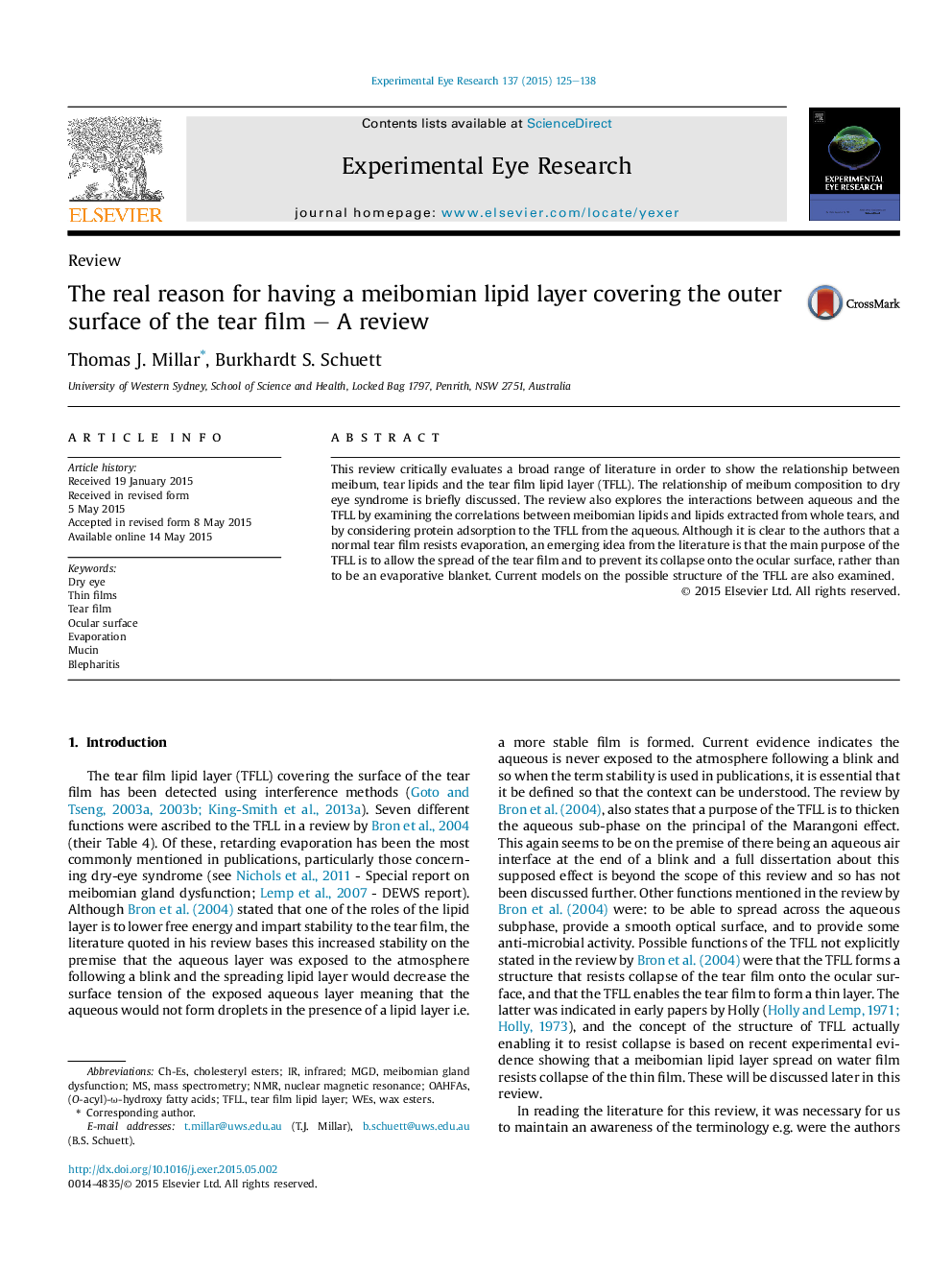| Article ID | Journal | Published Year | Pages | File Type |
|---|---|---|---|---|
| 6196704 | Experimental Eye Research | 2015 | 14 Pages |
â¢There is minimal scientific evidence that the TFLL prevents evaporation.â¢The TFLL function is to thin the tear film and prevent its collapse.â¢The possible roles of phospholipids as TFLL surfactants is critically evaluated.â¢Structural models of the TFLL are compared.
This review critically evaluates a broad range of literature in order to show the relationship between meibum, tear lipids and the tear film lipid layer (TFLL). The relationship of meibum composition to dry eye syndrome is briefly discussed. The review also explores the interactions between aqueous and the TFLL by examining the correlations between meibomian lipids and lipids extracted from whole tears, and by considering protein adsorption to the TFLL from the aqueous. Although it is clear to the authors that a normal tear film resists evaporation, an emerging idea from the literature is that the main purpose of the TFLL is to allow the spread of the tear film and to prevent its collapse onto the ocular surface, rather than to be an evaporative blanket. Current models on the possible structure of the TFLL are also examined.
Graphical abstractDownload high-res image (397KB)Download full-size image
